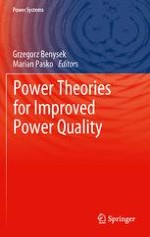2012 | OriginalPaper | Chapter
5. Control and Application of Parallel Active Compensators
Authors : Marcin Jarnut, Grzegorz Benysek
Published in: Power Theories for Improved Power Quality
Publisher: Springer London
Activate our intelligent search to find suitable subject content or patents.
Select sections of text to find matching patents with Artificial Intelligence. powered by
Select sections of text to find additional relevant content using AI-assisted search. powered by
